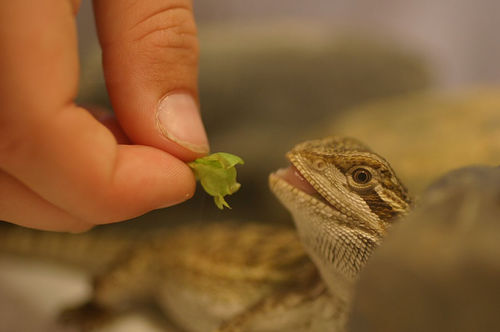The Ultimate Baby Bearded Dragon Care Sheet: A Beginner’s Guide to Raising Your Cute Little Reptile Friend
The Ultimate Baby Bearded Dragon Care Sheet
Congratulations on becoming a proud parent of a cute little baby bearded dragon! These little reptiles are not only adorable but also fascinating creatures. However, just like any other pet, raising a baby bearded dragon requires proper care and attention. In this ultimate baby bearded dragon care sheet, we will guide you through the essential care tips and requirements to raise your reptile friend.
Habitat Setup
The first thing you need to do is to set up a comfortable and safe habitat for your baby bearded dragon. Here are the things you will need:
- A terrarium tank with a minimum size of 20-gallons.
- A reptile carpet or other suitable substrates such as ceramic tiles, newspaper, or paper towels.
- A heat source such as a basking lamp or ceramic heater bulb to maintain the temperature between 95-110 °F during the day and 70-75 °F at night.
- UVB lighting to provide vitamin D3 which is essential for calcium absorption and bone health.
- A hiding place, such as a cave or log, for your baby bearded dragon to retreat to when it feels stressed.
- A water dish large enough for your baby bearded dragon to soak in.
- Plants and decorations to make the terrarium look more natural and appealing.
Make sure that the habitat is set up before bringing your baby bearded dragon home. This way, it can acclimate to its new environment and feel safe and comfortable.

Feeding
Baby bearded dragons have a hearty appetite and require a diet that is high in protein and fiber. The ideal diet for a baby bearded dragon should consist of:
- Live insects such as crickets, mealworms, and waxworms. Avoid feeding your baby bearded dragon insects that are larger than the space between its eyes.
- Vegetables such as collard greens, kale, mustard greens, and squash. Avoid feeding your baby bearded dragon spinach and lettuce as they contain low levels of nutrients and can cause digestive problems.
- Fruits such as strawberries, raspberries, and mango. However, fruits should only make up a small part of your baby bearded dragon’s diet due to their high sugar content.
Feed your baby bearded dragon with live insects daily, as much as it can eat within 15 minutes. Offer vegetables and fruits once a day, but remove any uneaten food within an hour to avoid spoilage and attract pests. Provide a calcium supplement by dusting the live insects with calcium powder at least once a week.

Handling and Taming
Baby bearded dragons can be timid and skittish at first, but with proper handling and taming, they can become friendly and sociable pets. Here are some tips on how to handle and tame your baby bearded dragon:
- Approach your baby bearded dragon slowly and gently, using a cupped hand to pick it up. Avoid grabbing it from above or squeezing it.
- Support your baby bearded dragon’s feet and tail with your hand to prevent it from wriggling.
- Handle your baby bearded dragon for short periods, gradually increasing the duration as it becomes more comfortable.
- Offer treats such as live insects or fruits while handling to associate handling with positive experiences.
- Avoid handling your baby bearded dragon after feeding, during shedding or stress, or when it shows signs of aggression.
- Always wash your hands before and after handling your baby bearded dragon to prevent the spread of bacteria.
By following these tips, you can establish trust and bonding with your baby bearded dragon, making it a happy and friendly pet.

Health Concerns
Bearded dragons are generally healthy pets, but there are some health concerns that you should keep an eye on. Here are the common health problems for baby bearded dragons and their symptoms:
- Metabolic bone disease – soft or crooked bones, lack of appetite or energy, tremors or twitches, and swollen or blackened limbs.
- Parasites – dark or swollen belly, diarrhea, lethargy, weight loss, and lack of appetite.
- Respiratory infection – wheezing or clicking sounds when breathing, mucus or discharge from the nose or mouth, and lethargy.
- Impaction – lack of appetite, lethargy, bloated belly, and small or no feces.
- Mouth rot – black or gray spots or patches on the gums or tongue, lack of appetite or energy, and drooling.
If you notice any of these symptoms or any abnormal behavior in your baby bearded dragon, consult a reptile veterinarian immediately. Regular health check-ups and observation can prevent and treat many health problems, ensuring a long and healthy life for your reptile friend.

Conclusion
Raising a baby bearded dragon can be a rewarding and fulfilling experience, as long as you provide the proper care and attention it requires. By following this ultimate baby bearded dragon care sheet, you can ensure that your reptile friend lives a healthy, happy, and long life. Remember to enjoy the journey of raising and taming your cute little pet, and you will have a loyal and affectionate companion for many years.
